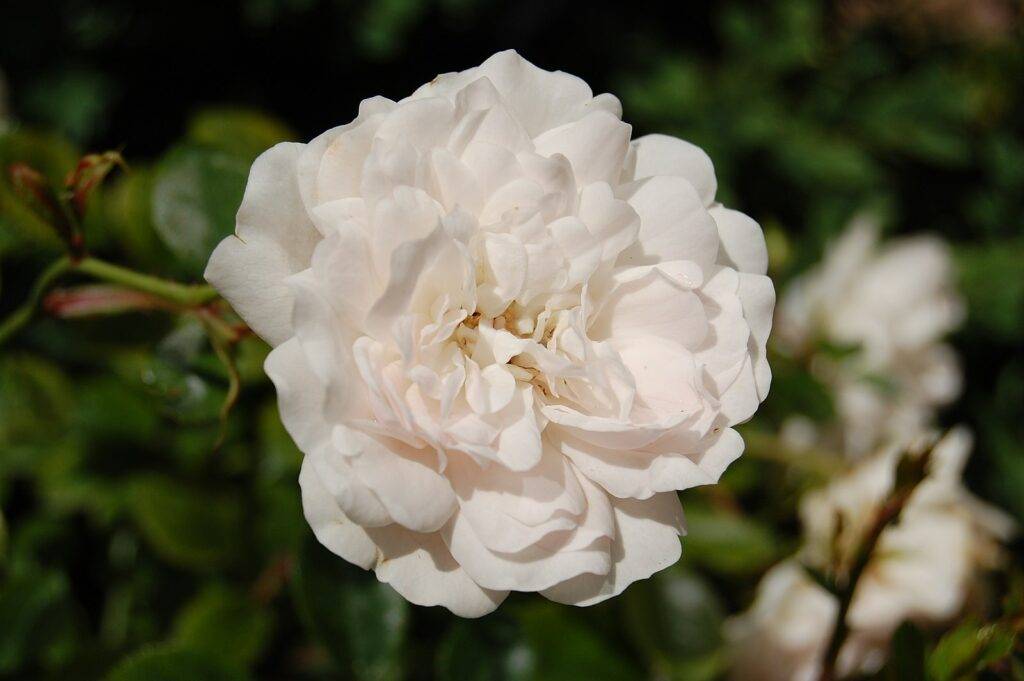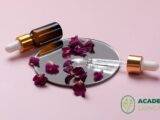What Are The Different Types of Rose Oil You Need to Know
Last Updated on June 16, 2023 by Aysenur Yashar
Rose absolute oil, rose essential oil, rose otto, rose hydrosol, there are a lot of different terminologies around our beloved rose oil. It can get pretty confusing once we do not know which rose oil type is the “real” rose oil. I was confused as well, so I did what I did best and hit the books! So It’s time to talk about the different types of rose oil and which one you should choose and for what you should choose it.
There are two important things that determine the type of Rose Oil – the production method and the rose species used. Different production methods and different species of roses will yield different types of Rose Oil. There are mainly two methods of producing rose oil – distillation and extraction which would produce Rose Otto and Rose Absolut. The rose species from which rose oil can be obtained are Rosa Damascena, Rosa Alba, Rosa Galiva, and Rosa Centifolia. Your rose oils properties, appearance and how you should use it vary depending on the species or rose used and the extraction method.
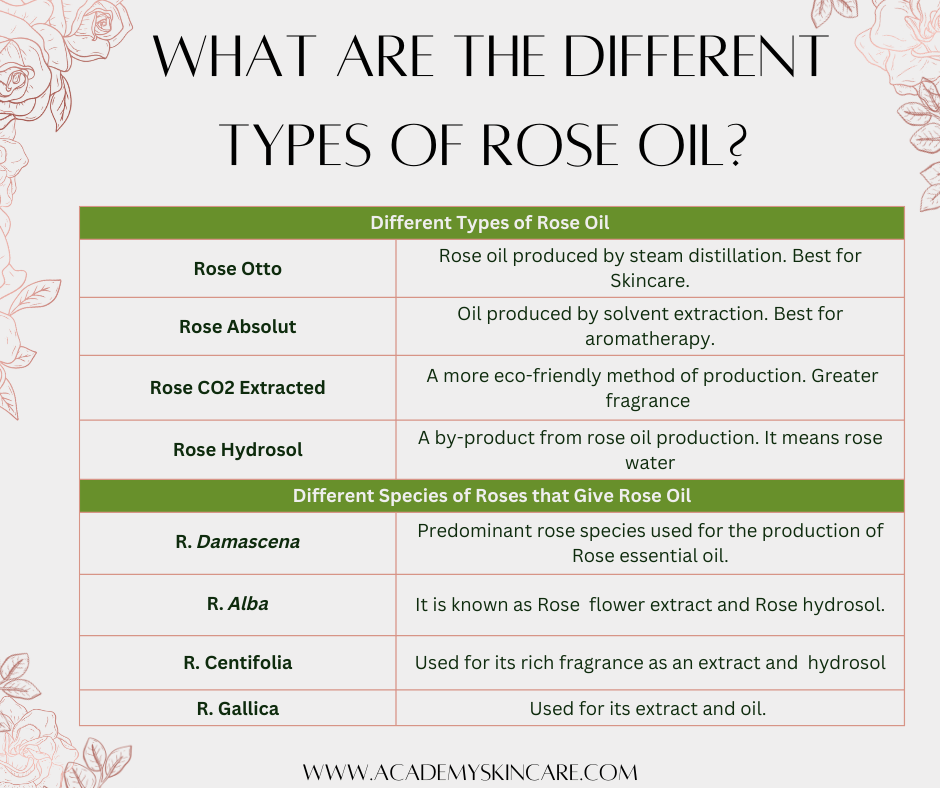
If you also though that rosehip oil was a type of rose oil – read the fierce debate here – rose oil vs rosehip oil! Or maybe finding out which rosehip oil is the best for your skin is your preffered read! Don’t worry, I got you – read this one here – Rosa Rubiginosa vs Rosa Canina.
Different Types of Rose Oil Based on the Extraction Method
Just a small warning – this is going to be a little too much chemistry, but it’s worth it for the roses 🙂
There are mainly two ways of producing rose oil – distillation or extraction. Steam distillation would yield the rose oil type – Rose Otto. But it is most commonly known as Rose Essential Oil :). Rose Absolute, on the other hand, is produced by extraction method which requires another solvent. There is a third way of producing rose oil, which I also did not know – CO2 Supercritical Extract which relies on a complex chemical procedure to produce the highest quality of Rose Oil.
Let’s break down the different types of rose oil one by one.
Rose Otto (Rose Essential Oil)
I have to admit, I thought Rose Otto was a whole different rose species and had no idea that Rose Essential Oil is known as Rose Otto.
Rose Otto is obtained by the production method of steam distillation. There is a bit of chemistry in how it works. Rose petals are put in a bowl and heated by steam. The heat breaks down the cellular structure of the rose, and the plant extract is released as vapor. The aromatic vapor is then condensed by cold water. Lastly, essential oil is easily separated from water because of the difference in densities.
Producing Rose Otto is extremely costly, it takes around 3 kg of rose petals to create 1 ml, 20 drops, of rose oil. This makes Rose Otto the most expensive rose oil!
Here is a graph that will make more sense!

What are the properties of Rose Otto?
So we understood the chemistry of producing Rose Otto, what about the properties? Rose Otto has a light semi-transparent color, it is lower in viscosity than Rose Absolut and it has a less aromatic fragrance than Rose Absolut. The stark difference in fragrance is actually due to the different production methods of the rose oils.
- Colour – light, semi transparent
- Scent – sweet, floral, mild in strength
- Density – low
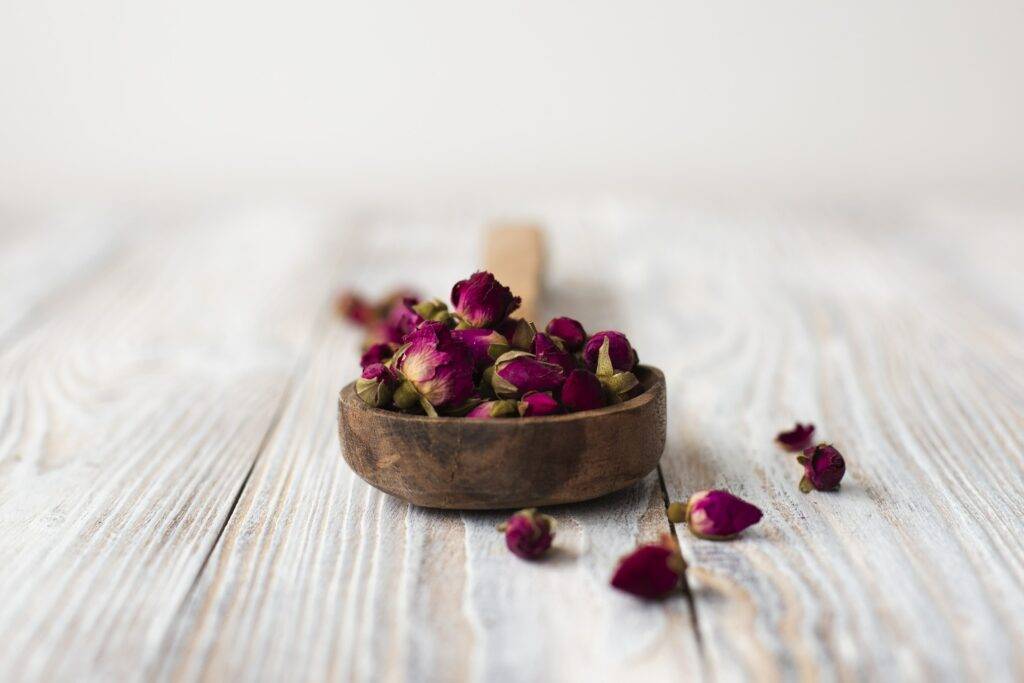
Rose Otto or just Rose Essential Oil, is very famous for its health benefits. I recently covered the benefits of rose water on dry skin and I was mesmerized (that is the right word!) by the overwhelming amount of health benefits of rose oil.
Rose Otto has potent antioxidant properties due to the high levels of phenolic compounds. Rose oil contains a high amount of citronellol, geraniol, and nerol all of which give antimicrobial properties to rose oil.
Alongside those properties, rose oil has many more health benefits, to which I plan to dedicate a whole separate blog, but if you are interested in roses, you can check out the benefits of rose water here.
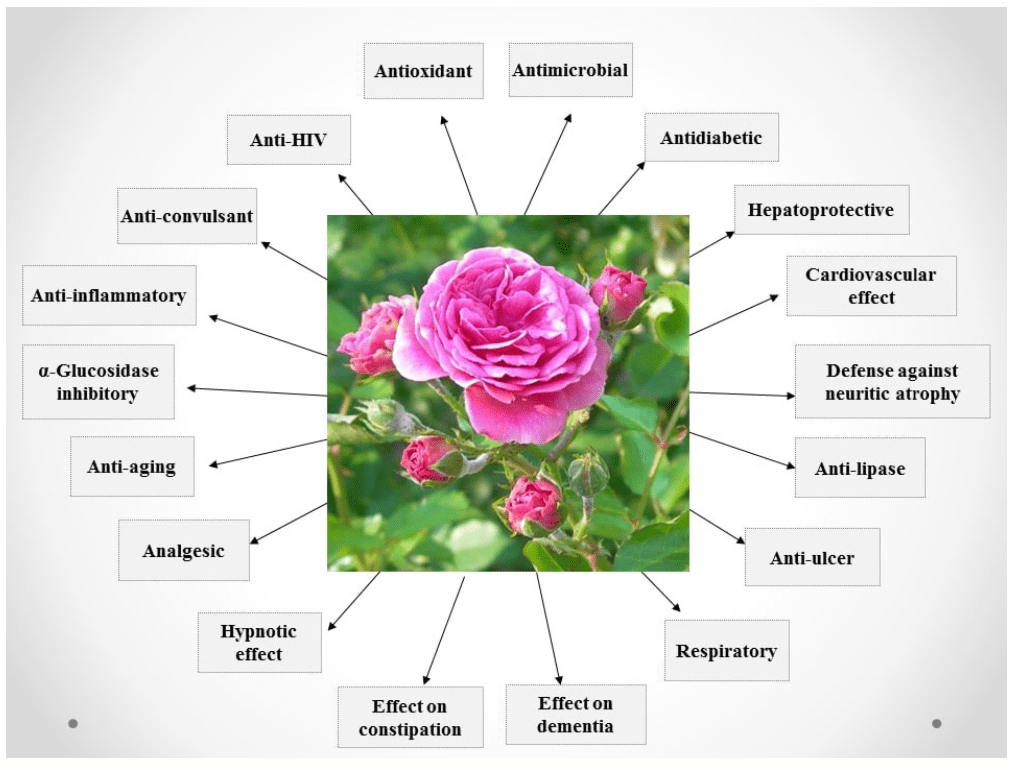
Rose Absolute
Rose Absolute is produced by solvent extraction method contrary to the Rose Essential Oil (Rose Otto) which is produced by steam distillation. So why does this matter?
Parfume extracts from flowers are generally obtained by solvent extraction method. Rose petals are put in a big bowl and washed with n-hexane creating a semi-solid product called “concrete”. This concrete contains many fragrance components like terpenes and sesquiterpenes. It also contains fatty acids, parrafins coming from the natural wax around the plant and methyl esters.
This concrete is processed with ethyl alcohol. This process creates a volatile oil from the semi-solid. Lastly, the alcohol is evaporated and the highly fragranced product is called an “absolut”.
I used to think that the Absolute in Rose Absolute represents a higher quality of rose oil but it turns out it is just the name of the product :D.

What are the properties of Rose Absolut?
You came here for skincare and all you got is chemistry, haha, I am sorry about that but we will get to the cosmetics shortly. Let’s talk about the properties of rose absolute then.
There is a distinctive difference between the fragrance levels of Rose Absolute and Rose Otto. Rose Absolute has a much more aromatic and stronger fragrance than Rose Otto. This is because of the extraction method of Rose Absolute. This makes Rose Absolute a great candidate for perfumes and scented goods.
Rose Absolute is a little thicker than essential oil. It also has a slightly darker color. Rose Absolut contains some trace elements of the solvent that was used in the production method. More on those solvents later!
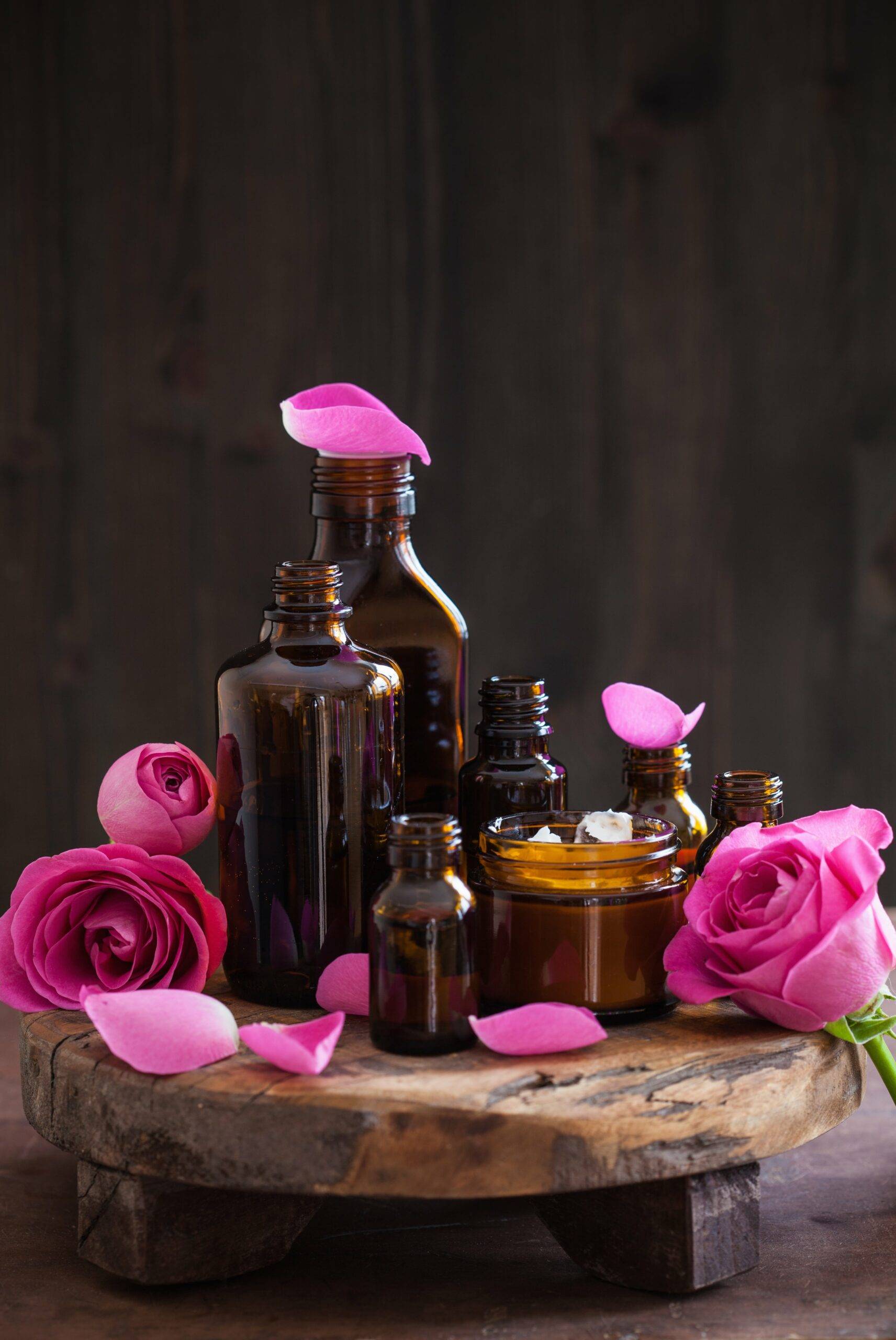
- Colour – slightly darker
- Scent – very strong and aromatic, sweet, floral
- Density – higher
Rose Absolute just like its counterpart Rose Essential Oil has antioxidant properties. It has even higher amounts of phenolic compounds making it a good natural preservative. Rose Absolute also has antimicrobial effects. This may be due to the high levels of phenyl-ethyl alcohol in Rose Absolute.
Rose CO2 Supercritical Extract
The CO2 Supercritical Extraction method was a little too technical for me by this point, however, it is worth mentioning as it is one of the most eco-friendly and sustainable extraction methods.
CO2 increased to a certain temperature and pressure enters the supercritical state. In that state there is not a clear distinction if it is gas or liquid, however now it is equipped with better abilities to bind to components in the roses and extract them.
After CO2 at a supercritical state binds to the rose components they enter a chamber where the CO2 turned into its liquid form and separated from the rose material. The remaining rose material is extracted as an essential oil.
In this way, the CO2 is recycled back and can be used for the next round! This makes the CO2 supercritical extraction method really environmentally friendly.
What is setting Rose CO2 Extract Apart?
I could not help but wonder if this new technology yields better essential oil. Rosehip oil made by CO2 supercritical extraction method is already really famous with Pai Skincare and the rosehip oil is stunning quality. Is the same applicable to rose oil?
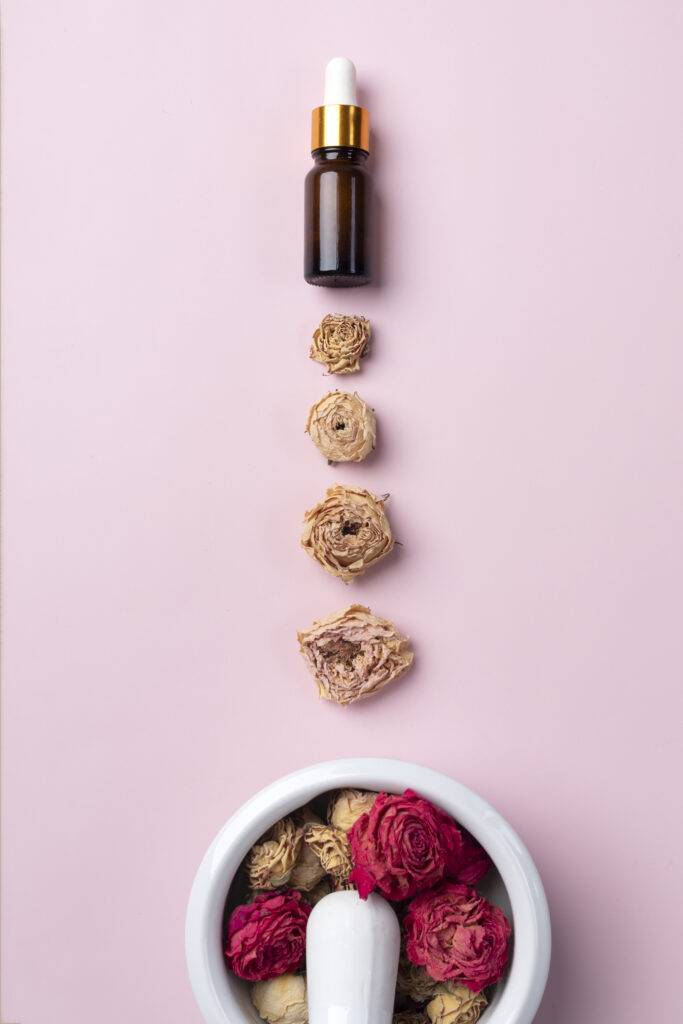
One study compared the composition of rose essential oils produced by steam distillation (rose otto), solvent extraction (rose absolute), and supercritical CO2 extraction. The rose CO2 extract had greater amounts of the compound 2-phenyl ethanol from the other production methods. 2-phenyl ethanol which is the main compound that gives that radiant rose fragrance.
Moreover, the rose CO2 extract has less of non-odor components like paraffin. Contrary to rose absolute, the rose CO2 extracted oil did not have elements of the solvent because it has all been recycled.
However, this remains an expensive method that required very high technology and machinery. I believe, slowly but steadily we will start seeing more of the rose CO2 extracted oil around us!
What are the Different Rose Species that give Rose Oil?
Rosa Damascena
Rosa Damascena is the rose species that is predominantly used for rose essential oil production. I am proud to say that even my family was involved in harvesting the beautiful Rosa Damascena and producing rose oil.
Rosa Damascena can be grown in different regions – Turkey, Bulgaria, Iran, Moldova, and even China. It is safe to say that due to its beauty and extensive cosmetic and medical usage, the rose has become a symbol of these countries and their traditions.
Because of its high nutritional value and fragrance, every piece of Rosa Damascena can be used. Hence you can expect to find Rosa Damascena Hydrosol (Rose Water), Rose Essential Oil, Rose Absolute, and Rose Flower Extract. While this is the cosmetic part of Rosa Damascena, there is also the gastronomical – need I even say, roses can be a luxurious addition to your meals.
Rosa Damascena has many many proven pharmaceutical benefits – it is a potent antioxidant, has anti-viral activities, anti-inflammatory activities, analgesics, and many more. Please look at the figure above to have an idea of the extensive benefits. I think another separate blog should be dedicated to the benefits of rose oil! Let me know what you think!
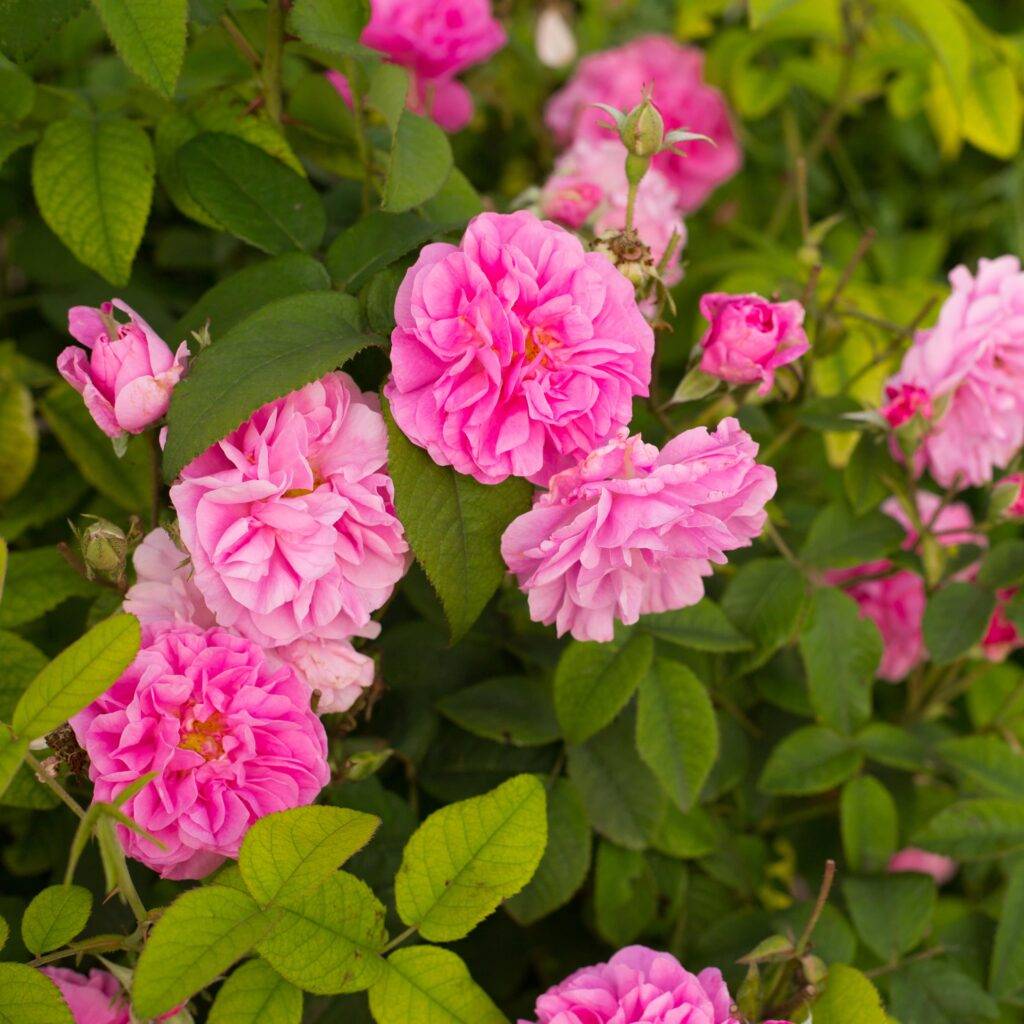
Rose oil is a luxurious addition to any skincare routine, and frankly, I think it might be one of the most game-changing additions.
Rose water is another luxurious addition to your skincare, with its brightening and anti-inflammatory properties, it can easily become your to-go micellar water. Read more about the benefits of rose water here.
Rosa Alba
Rosa Alba is actually a traditional symbol of Bulgaria – the Bulgarian White Rose. Just like its other rose cousins, Rosa alba has many pharmaceutical benefits that have been used for decades. Tea from the leaves of rosa alba has been used for the treatment of eye problems, and infections and as a laxative.
As a skincare it is known as rose alba flower extract and rose alba hydrosol. While rose alba essential oil is available as well, Rosa damascena remains the preferred species for essential oil extraction.
Rosa Centifolia
Rosa Centifolia is also known as Cabbage Rose Flower, or rose with hundred leaves, is actually a cross between 4 different types of rose species – Rosa Damascena, Rose Canina, Rosa Moschata, and Rosa Gallica. It is a large rose and it is highly fragrant.
Rosa Centifolia compared to Rosa Damascena has 3 times less essential oil content in its leaves. So it is mainly used to obtain highly aromatic and concentrated fragrance oils – absolutes. So Rosa Centifolia is mainly used in the perfume industry. However, you can also find rose water from Rosa Centifolia – rose hydrosol and add it to your cosmetic routine.
Rosa Centifolia has high nutritional content, especially vitamin C and there is a high volume of ongoing research to discover more of the various antioxidant and pharmacological properties of Rosa Centifolia.
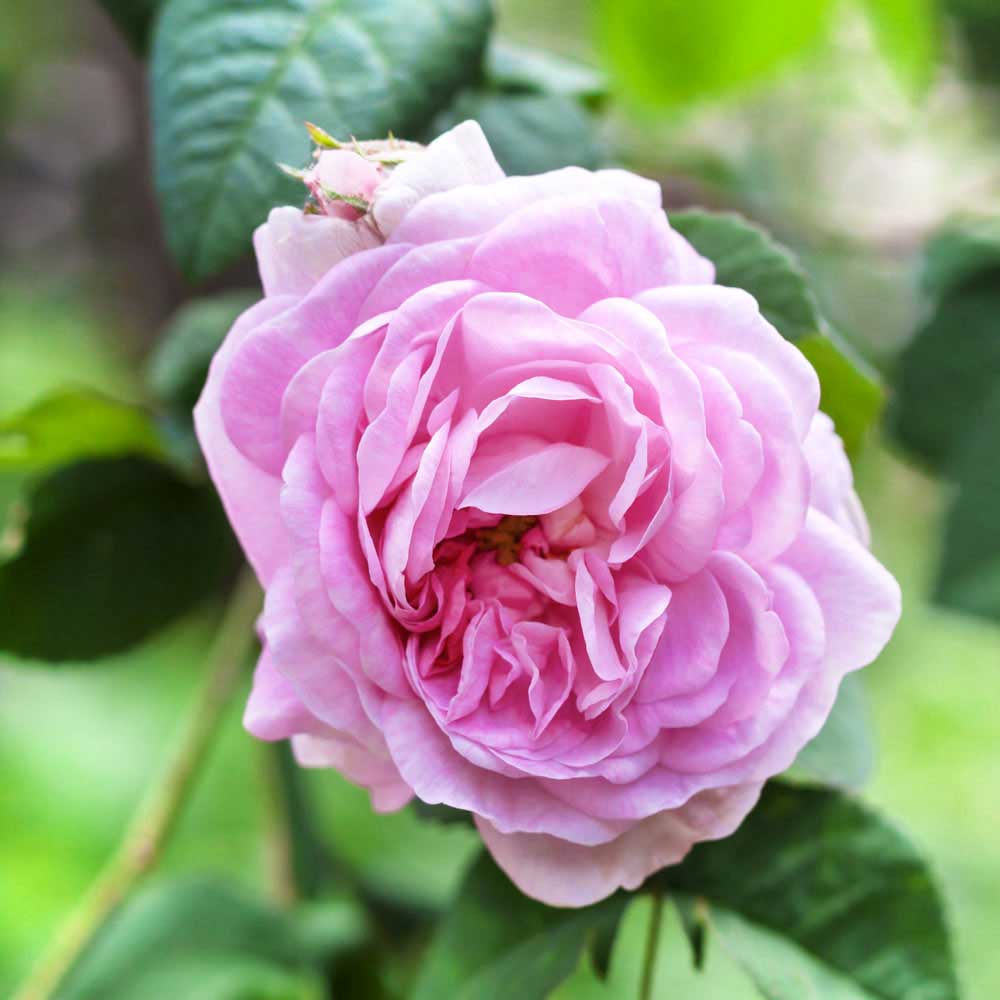
Rosa Gallica
Rosa Gallica is also known as the French Rose or Rose of the Provence and is even known as the “apothecary rose”.
The French Rose just like the other species can be found as an essential oil, flower extract, and as a component in various foods. Unfortunately, I could not find any information if there is Rosa gallica hydrosol. Moreover, there is also limited scientific information about its pharmaceutical benefits when compared to the other Rosa species.
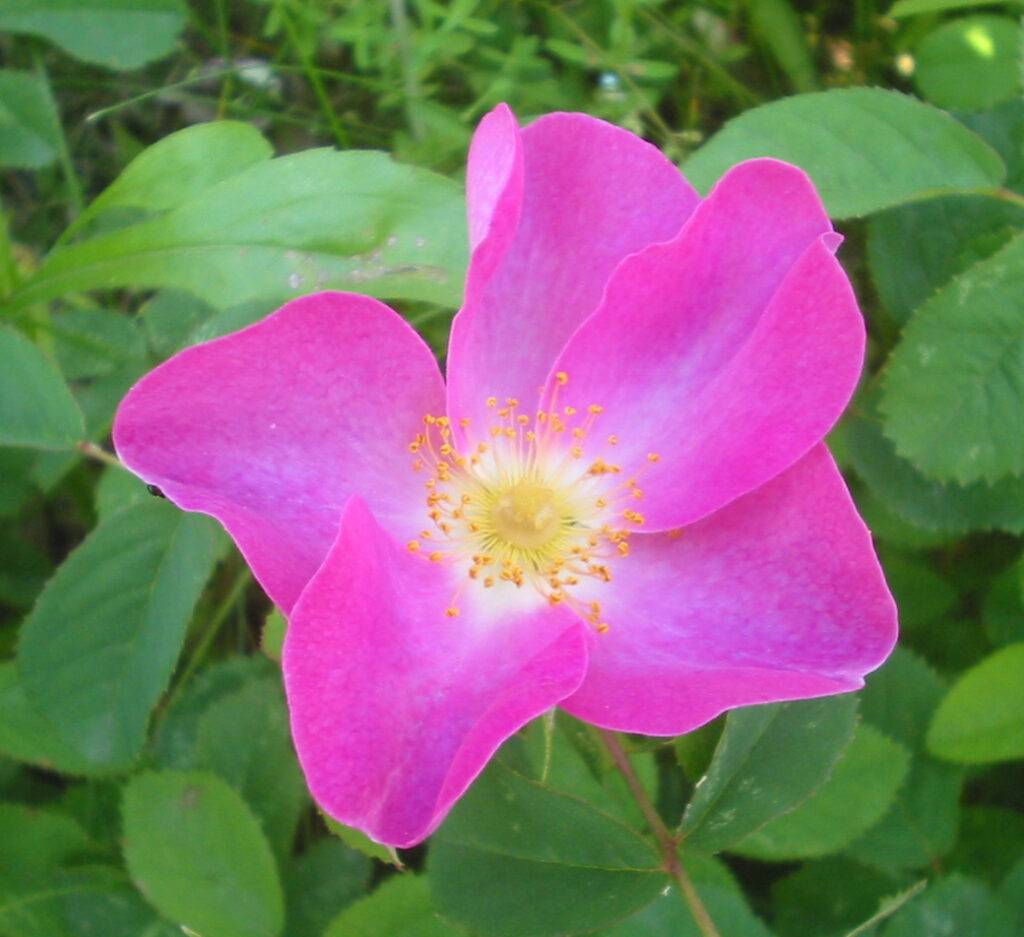
All Your Questions About the Rose Oil Explained

What is the Difference Between Rose Essential Oil and Rose Otto
This was very confusing for me because you can read rose otto and rose essential oil in various places. I was unaware of what each one meant and thought they were referring to two different rose species for a long time.
Rose Otto and Rose Essential Oil mean the same thing – the essential rose oil extracted by steam distillation. It is the rose oil that is preferred to be used in cosmetics. It gets its color, chemical properties, and scent from the method of production – steam distillation.
What is the Difference Between Rose Otto and Rose Absolute
Rose Otto is rose essential oil produced by the classic steam distillation method. Rose Absolute is rose oil produced by solvent extraction method. Both of them are rose oils however their chemical constituents can vary slightly. Rose Absolut has a greater fragrance than Rose Otto. However, in rose absolutely little amounts of the solvent used in the extraction method can remain.
Rose Absolut is also a little thicker with a darker color compared to Rose Otto.
Which type of Rose Oil should be used in skincare?
After discussing all the different methods of producing rose oil and all the rose species that can give rose oil, now comes the real question. Which types of Rose Oil should be used in skincare?
Let’s start with the production methods.
Rose Otto is the classical rose oil that has been used for decades, its safety and efficacy have been proven over time and right now rose otto dominates the market as the predominant rose oil for cosmetics. Rose oil obtained by supercritical CO2 extraction is also a good option. The oil produced is of good quality, even better fragrance and with less paraffins. The only drawback is that rose CO2 extract is not as widely available and it is even more expensive than Rose Otto. On the other hand, The use of Rose Absolute in skin care and topical aromatherapy remains debatable, due to, although tiny, amounts of trace elements of the solvent.
So Rose Otto is the winner from the production side! Hooray. Let’s see which species of roses produces the best oil.
There are mainly four rose species harvested for their oil – Rosa Damascena, Rosa Gallica, Rosa Alba and Rosa Centifolia. Out of the four Rosa Damascena is the one with the greatest concentration of rose essential oil within its petals. The other rose species have less essential oil however they are still being used for the production of rose water and for the perfumery.
Hence the best rose oil that you should look for in your skincare routine is Rose Essential Oil produced from the species Rosa Damascena and obtained by steam distillation!


